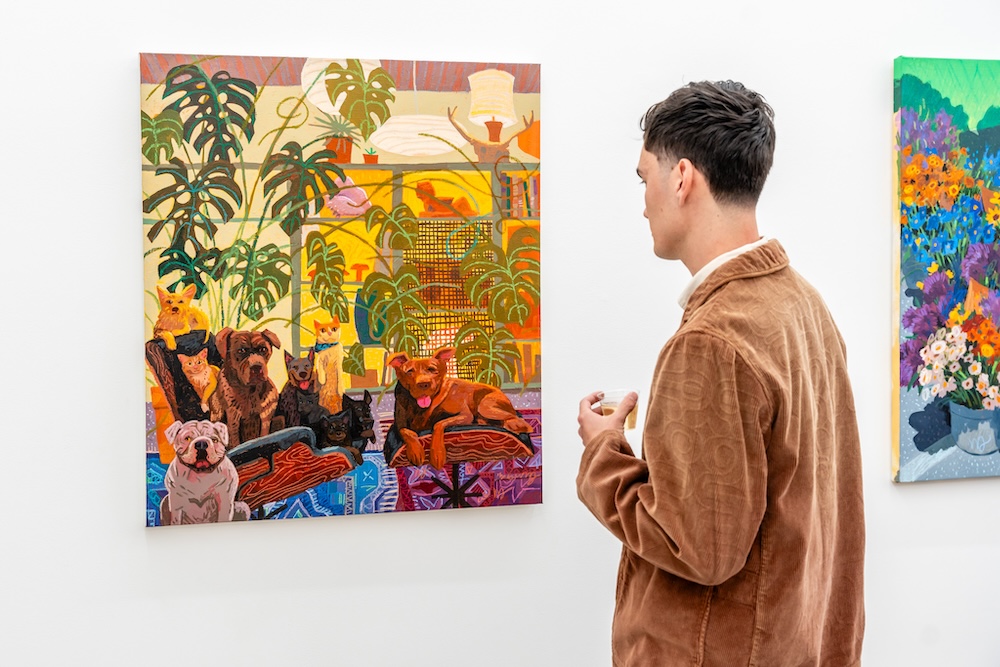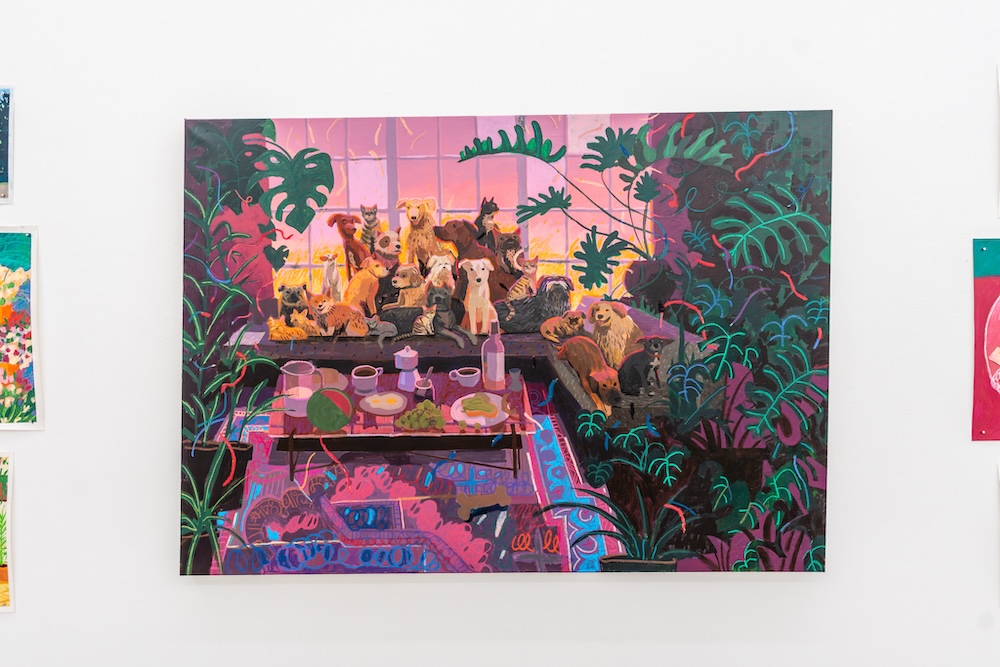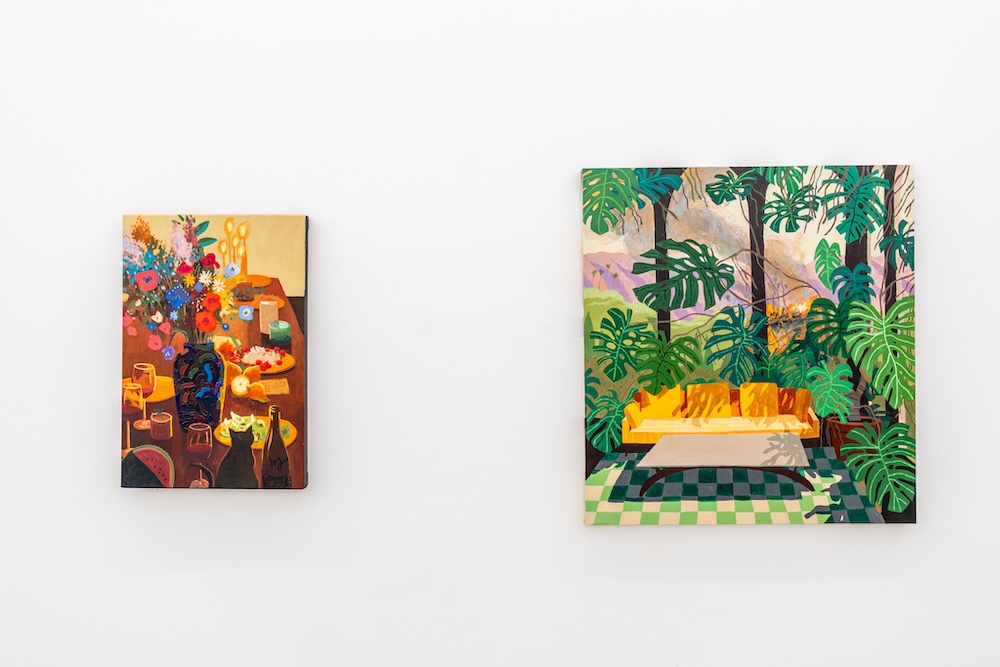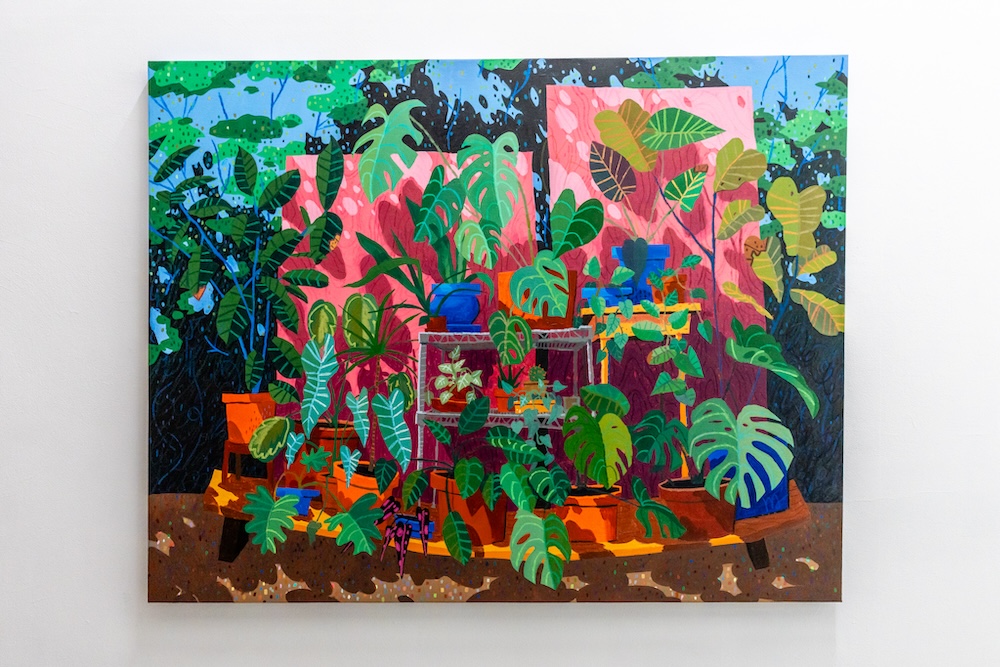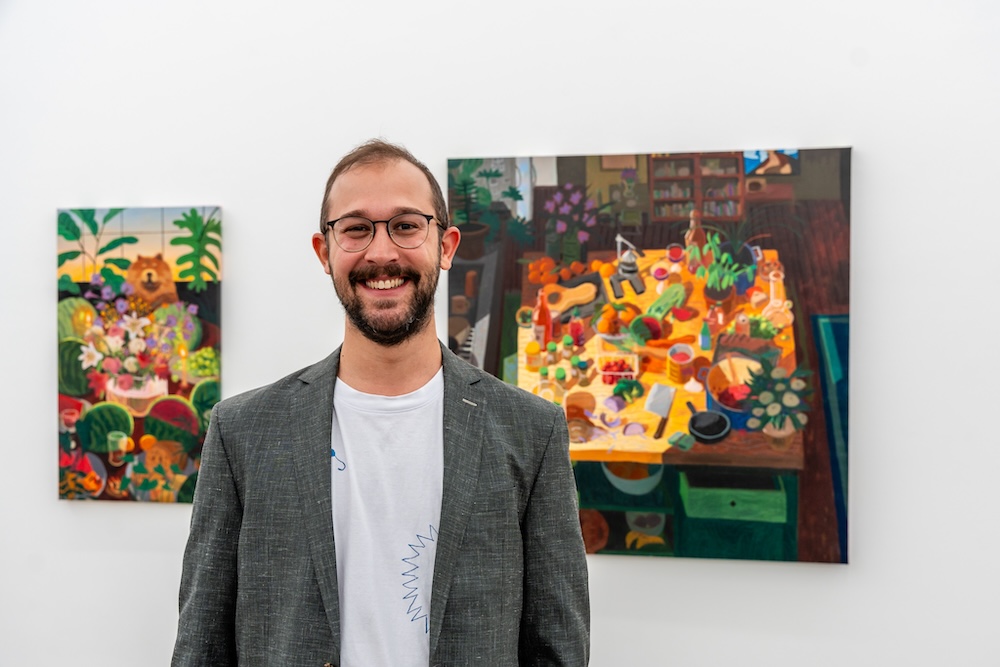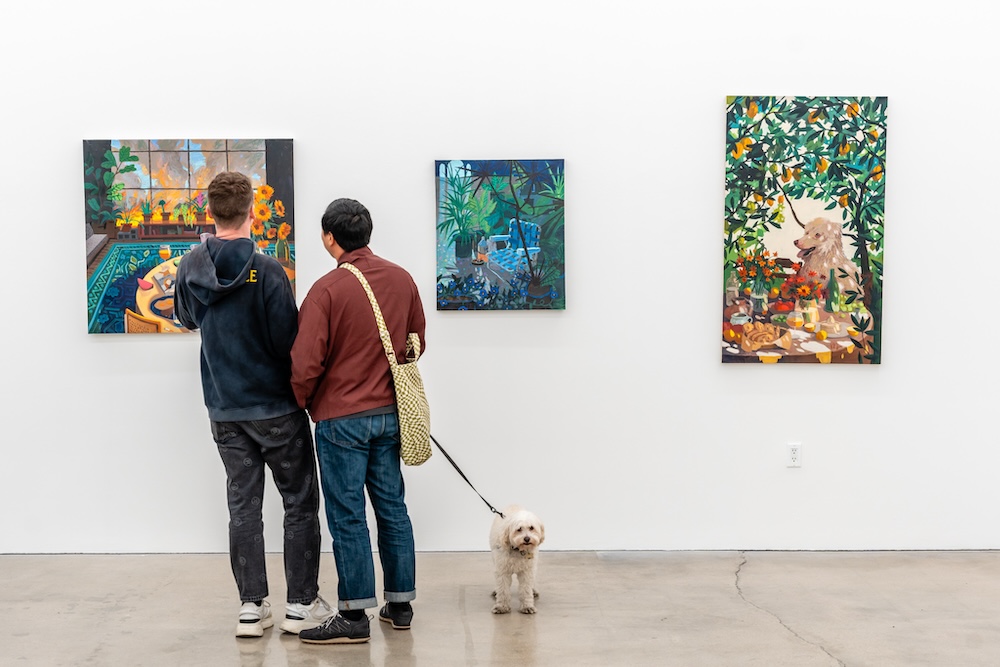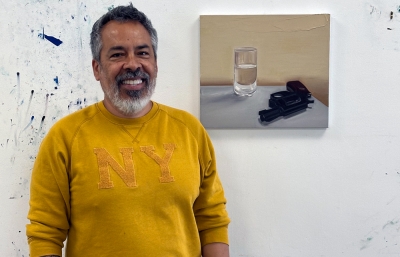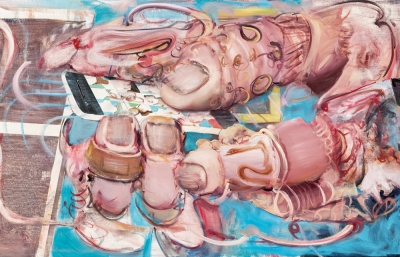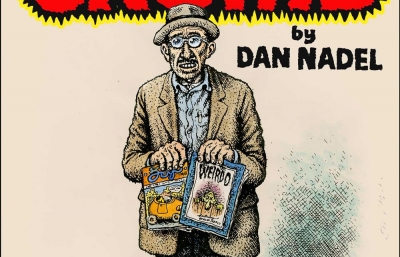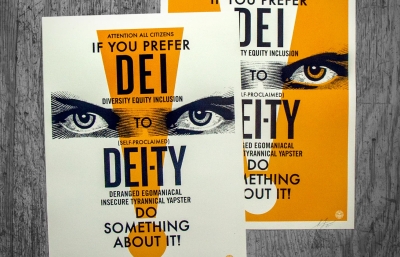Nicholas Bono Kennedy has captured a mood in Dinner Party (While the World Burns), on view at Hashimoto Contemporary. There is the overwhelming contemporality of it; the idea of living your life, or arranging a gathering in an attempt to foster kinship and joy in a time when the world's dynamics are imploding. There is also something quite personal about being anxious, having anxiety of getting something right but also to host and perform for others. In his quiet and highly intricate still-lifes, Kennedy is letting us into his life as many of us are thinking of retreating.
Dasha Matsuura: A big theme in this upcoming exhibition, based on your writing, is the turning pointA big theme in this upcoming exhibition, based on your writing, is the turning pointbetween a good thing and a burden. To start, when did you notice good things in your lifebecoming burdensome? What were some moments that served as catalysts for the bodyof work you made for this exhibition?
Nicholas Bono Kennedy: I've always loved gardening and plants. As a kid I always had a garden plot with vegetables.When I moved to Los Angeles ten years ago, my ability to garden really diminished—there wasjust no outdoor space or land to till.
I started collecting potted plants and propagating them. At first, it was only a few but it spiraledinto almost 100 plants. At one point we had a genuine jungle house. It was an extravagant andamazing fairy dreamland, but the bugs noticed I had built them a sanctuary. Thus began ayear-long battle of getting rid of Aphids, Gnats, and my main enemy Spider Mites! It really tookmore of my time and attention than I bargained for and eventually this magical jungle living roombecame a huge source of my daily anxiety.
The title of the exhibition is Dinner Party (While the World Burns), evoking this idea of The title of the exhibition is Dinner Party (While the World Burns), evoking this idea of indulging or continuing to enjoy our lives even while awful things happen around us. Part of the subject matter seems to be a confrontation with distraction—the lush scenery orcute pets you paint allude to a common coping mechanism of re-focusing on somethingpositive or safe. When you were painting, how did you balance this air of foreboding withthe positive aspects of distraction on a compositional level? On a personal level?
Many of the distractions featured in the work are things I have regularly turned to as atemporary distraction from my own anxious thoughts. I chose to focus on the theme of excess because I have a habit of leaning too much on one or another distraction as a method of self soothing.
For years, I would smoke weed daily, which genuinely did make life easier to interact with each day. But after a while that thing I was using as a distraction from my own anxieties became the source of my anxiety. And then, I had to work really hard on reducing and eventually quitting alltogether. I try to use those things only as a means of elevating an already excellent experience rather than a tactic to improve a bad experience.
You also mentioned that these distractions—pets, plants—in excess can create their own chaos. But the paintings are, still, beautiful and pleasant to look at. Can you say more about creating a sweet spot between the anxiety around overconsumption/chaos and the pleasurable aspect of taking in your paintings?
I have always gravitated towards bright and colorful images, and my work has always felt very playful and colorful because of those natural inclinations. For this exhibition I wanted to find a way to communicate the anxiety and dread that many of us are feeling on a daily basis while still creating works that exude a playful energy.
I want to make images that instantly communicate an overwhelmingly positive feeling about being alive, but I also want the paintings to be worthy of a deeper investigation into the world; for them to reveal themselves slowly and express honest emotions that I wouldn't wear on my sleeve. I like when paintings are able to unfold slowly, communicating depth and complexity and more to the viewer.
I want to talk a bit about the technical aspects of your paintings. You often mix paint and oil pastels on the surface, which adds a lot of texture to the paintings. When did you begin to incorporate materials in addition to paint? And since you do a fair amount of plein air painting, what drew you to the quick, playful strokes of oil pastels?
The first thing about painting that I really fell in love with was the process of painting en plein air, which means to paint from direct observation in one attempt. Trying to balance accurately representing a subject in a short time while also focusing on creating varied and unique marks is a challenge that will always excite me. It feels more like practice than a final product.
When I started creating larger and more contemporary paintings, I felt an abundance of freedom to explore different ways of mark making that felt very honest to how my brain worked. This resulted in a lot of hard edges and blocks of color, and although I really liked that new visual language I was creating for myself, it lacked the playfulness and energy I had in my drawing practice. In an effort to marry the two, I realized that the way I draw is incredibly haphazard and playful. I like scribbling and gesticulating with a pencil.
I incorporate pastels in my paintings similarly to how I draw in a sketchbook. It's loose and scribbly and I think it helps to balance the stiffness of lots of hard edged shapes.
I was also curious about the oil pastels because I think you mentioned you paint from photographs, or rather an amalgamation of photographs and fantasy or memory. Are sketching and drawing a part of your process? Especially since you try to create characters or a world a character might inhabit, I wondered if you do studies.
I spend a lot of time drawing in the studio, like one or two hours a day. It’s a great way for me to explore new compositions and ideas, or just generally play. A lot of these drawings are fairly ugly and quick, but I think of that time as a way to force thoughts to emerge from the ether of my mind.
When I start a new painting, I’ll usually use loose sketches as my reference and I’ll work from that sketch until things are blocked in. Then, when I start to hone in on the details, I’ll figure details out on the canvas and form a story of the character that exists in that space as I paint, thinking about who they might be and what they might love. This part of the process is really exciting for me, and I don't like to plan too much because very often I am surprised at some of the things I include.
It’s almost like being on a first date and halfway through you learn they have the same favorite movie as you, or that they hate eggs. These little personality traits pop up and surprise me about the fictional characters who inhabit the environments I imagine and I end up loving them.
You also mentioned that you look primarily to the Impressionists for stylistic inspiration, namely Claud Monet or Pierre Bonnard. When taking inspiration from more historical sources, what aspects of these painters’ works do you study? What do you update, evolve, and what do you try to emulate perfectly?
|Paintings by artists like Monet and Bonnard seem to radiate with life and energy. I have always believed the subject matter of those paintings are the light and color rather than actual objects depicted. I have always admired that and I want the light and color to be one of the first things people notice in my paintings. I want that aspect to draw them in so that they can then further investigate the details and story of the world within.
One of my favorite paintings is The Yellow Scale by František Kupka. Although this is a self portrait, the thing Kupka is painting is the color yellow, it's his attempt to make sense of this color and fully understand it.
Several of the smaller flower or fruit compositions are pulled directly from historical paintings. Can you share which ones, and what initially struck you about those works?
One of my favorite small works in the show is a small painting, Ode to Redon. The painting by Odilan Redon was displayed at the Getty Center in LA. He is not as well known as Monet or Picasso but I love the way he paints flowers, and wanted to try to recreate a bouquet of his flowers into a more contemporary setting. It’s certainly not a 1:1 copy of his flower painting, and I could have used any floral arrangement in that painting, but I like the idea of paying homage to some of my favorite painters. It’s a way to try to get inside their heads to think about their work from a more intimate perspective.
Dinner parties and food spreads are a central subject in this new series of works. Are there particular foods or flowers that you love painting? That are a challenge for you?
I really love painting melons, there's tons of melons in the show. There is something so amazing about a bright, almost glowing red color nestled inside the dark rind of a watermelon. Often while painting melons I think about watermelon jelly beans, they had the same red interior and dark green shell and if you held it up to the light it would make the red reveal itself. It's one of those really small childhood memories that ended up making a huge impact.
That and glasses filled with liquid, I love painting light refracting through glass and liquid. I don't have a fun anecdote about it but it does bring me great joy.
Each of these works seems to pull directly from a personal anecdote. Are there certain paintings you feel are especially personal? Any stories you want to share?
The painting Prep Table is one of my favorites in the show. A few years ago we had the opportunity to rent a 2 bedroom 2 bath house in the suburbs of LA for a ridiculously low monthly price. In that house, my wife Casey built most of our furniture, including the large cutting board island featured in the painting.
This painting is kind of an amalgamation of our time at that house. There are ingredients for several of our favorite meals and drinks. Honestly every single object in that painting has a little anecdote. It's imbued with memory of a time that has passed. We eventually were forced to move out of that house since the owners sold it (part of why the rent was so low). But I am not sad I don't have that table or house anymore. Things come and things go. I’m happy I was able to solidify those memories into a painting.
What moments do you find pure joy in your studio?
I feel joy in my studio when I am able to be fully absorbed into my task at hand, when my mind is not wandering and there are no distractions between me and painting. I certainly don't work like that often because it's incredibly taxing and not always easy to achieve.
In your life?
I often feel pure joy when I notice something special happening with the light. For instance, there is a section of the 110 Arroyo Seco Parkway where you drive under three or four archway tunnels. On the other side of all that darkness is a vast skyline with distant mountains and hills. The juxtaposition of those two visual experiences never fails to make me feel joy.
Which of your plants do you hate but can’t bring yourself to throw away?
That stupid fucking bonsai tree… We acquired this small tree a few years ago, and it just won't thrive. It also won't die. It lingers in this terrible plant liminal space of being incredibly unhappy in its environment but unwilling to give up. Every few months it loses a bunch of leaves to the point I think it's ready to be tossed in the trash. But then viola. It will bounce back only for the cycle to start again. It's very ugly and sad currently, but it might perk up at some point. I just can’t bring myself to throw it out.
Best meal you’ve ever had? And did you or do you plan on painting it?
That is a really tough question. Going out for delicious meals is something we do a lot so it would be hard to pick a favorite. One of my favorite things to eat is a mainstay in LA, Pine and Crane. That meal is represented in Flower Van at Sunset Plaza, and is also one of my favorite paintings in the show.
How many pets do you have? Who’s your favorite?
I have two cats named Turtles and Tater-Tot. I don't know if i could pick a favorite, but Tater-Tot is a puddle of anxiety and he really relies on me for comfort. I wouldn't say he's my favorite but he loves me so wholly and uniquely. The other cat is a star, an athlete, and a model. He doesn't need me at all, but we also love each other.
What’s your go-to de-stressing activity?
Honestly, painting is my de-stressing activity. Before painting was ever my career, it was how I found meaning in my life. I would be painting even if I was doing it alone in the woods on the base of trees for only the squirrels and deers to see. I also love to spend time with my wife, or go on long walks with no destination, meandering through the neighborhoods of Los Angeles. If I am able to make friends with a cat, the stress evaporates from my body like steam.
Finally, in your writing about the exhibition, you allude to a general hopelessness about the state of the world. An inability to act. For you, where are the moments of hope?
The moments of hope for me come in the individuals around me. There are lots of people working together to bring about positive change in the world. And even if we haven't changed the state of the world in our life crusade, we are all trying to get through this life relatively unscathed. I have been fortunate enough to know many people who do that by lifting others up and championing them. Hopelessness certainly isn't the answer, but it's a feeling that was worth investigating for me; if only to verify that feeling hopelessness sometimes is natural, but never worth settling for.
Dinner Party (While the World Burns) is on view at Hashimoto Contemporary Los Angeles through November 30, 2024

